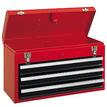

- Inspect your hard hat each day before use. Compress the shell sides inward about 1 inch and release; the shell should return to its original shape. There should be no evidence of dents, cracks, evidence of penetration or damage due to impact, rough treatment or wear. Hard hats that are subjected to UV radiation will lose the glossy finish and have a chalky appearance.
- Ensure that you are choosing the correct type and classification of protection according to the hazard. Type I will provide top impact and penetration protection; Type II will provide top and side impact and penetration protection; Classification G (general) protects you from falling, flying objects and up to 2,200 Volts; E (electrical) protects you from falling, flying objects and up to 20,000 Volts; C (conductive) protects you from falling, flying objects but does not protect you from electrical hazards or corrosive chemicals.
- Replace your suspension on an annual basis and replace the shell when it fails the visual inspection.
FACTOID: America’s first ‘hard hat area’ was set up at San Francisco’s Golden Gate Bridgeproject. Since then, millions of workers have been protected by hard hats.

 RSS Feed
RSS Feed
